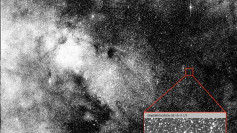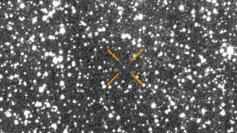The interstellar comet 3I/ATLAS is again at the center of public fascination, as new images and online speculation reignite a debate over whether the object's unusual characteristics signal natural behavior or something more extraordinary. The comet, first detected on July 1, 2025, has drawn comparisons to the controversial interstellar object 'Oumuamua, whose form and motion fueled long-running debate over potential artificial origins. The renewed attention comes amid viral claims circulating online alleging leaked NASA photographs depict a "spacecraft-like shape covered in dust," though no space agency has confirmed the authenticity of the images.
Astronomers identified 3I/ATLAS using the NASA-funded ATLAS telescope in Río Hurtado, Chile, confirming it as the third known interstellar object to enter the solar system. Its hyperbolic trajectory-moving at more than 210,000 kilometers per hour-indicates it is not gravitationally bound to the Sun and will exit back into interstellar space. The comet reached perihelion on October 30, 2025.
NASA's Hubble Space Telescope captured images of the comet on July 21, 2025, from a distance of 277 million miles, revealing a compact nucleus surrounded by a gaseous coma. Additional observations by the Mars Perseverance rover during a close planetary alignment provided surface-level tracking from Mars in early October. Data from the European Space Agency's Mars Express and ExoMars missions confirmed a carbon dioxide-rich composition, consistent with comets formed in cold, distant star-forming regions.
As 3I/ATLAS moved out of the Sun's glare during November and December, medium-size telescopes in the Northern Hemisphere began detecting the object again. The ESA's JUICE probe is scheduled to observe the comet between November 2 and November 25, with findings expected in early 2026.
Alleged new @NASA photo of 3I/ $ATLAS
(Not Confirmed).
If this is real it changes Everything, as this shows clearly a SpaceCraft defined by structures lines covered in a ton of Dust from it's travel.
Shape shown here is similar to Oumuamua!
web - https://t.co/3Ws6SieGRQ… pic.twitter.com/iqgmfyhZVE — $Atlas CTO (@Atlas__CTO) November 4, 2025
The attention surrounding the object intensified when social media posts began circulating images described as leaked NASA captures. One widely shared claim stated: "3I/ATLAS new photo allegedly leaked from NASA, which is not confirmed, shows clearly a spacecraft defined by structural lines covered in dust. If this is real, it changes everything. The shape shown here is similar to Oumuamua." No agency has authenticated these images, and experts caution that many appear to be composites, manipulated renders, or misattributed telescope frames.
Harvard astronomer Avi Loeb has contributed to ongoing discussion with remarks that "it doesn't look like a typical comet," echoing arguments he previously raised regarding 'Oumuamua. Loeb also noted that post-Mars imagery reveals features "unlike a typical comet." In October, The New York Post quoted his interpretation that the object's tail structure "could be sign of alien 'maneuver'."
NASA, however, rejected claims of extraterrestrial engineering on September 11, 2025, stating that narratives tying the object to alien activity are unsupported. Fact-checkers later emphasized that scientists "did NOT agree" that 3I/ATLAS was a spacecraft "approaching Earth for surprise attack."
In a Newsweek interview on October 29, Loeb acknowledged the broader discourse, saying the frenzy reflects "terrestrial stupidity" more than any extraterrestrial signal. SETI researchers similarly reported no artificial radio emissions and no structural signatures inconsistent with natural cometary formation.
As telescope access increases in the coming weeks, researchers expect additional chemical-composition analysis to clarify the comet's origins.





